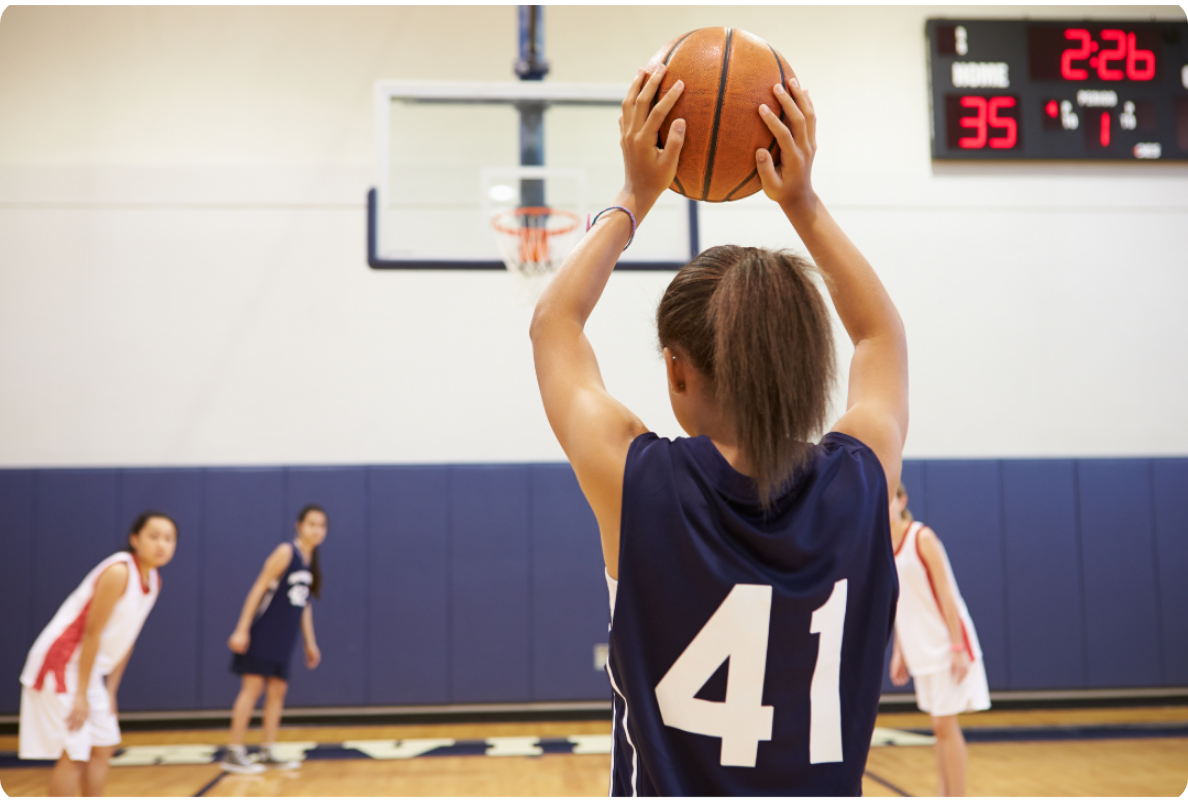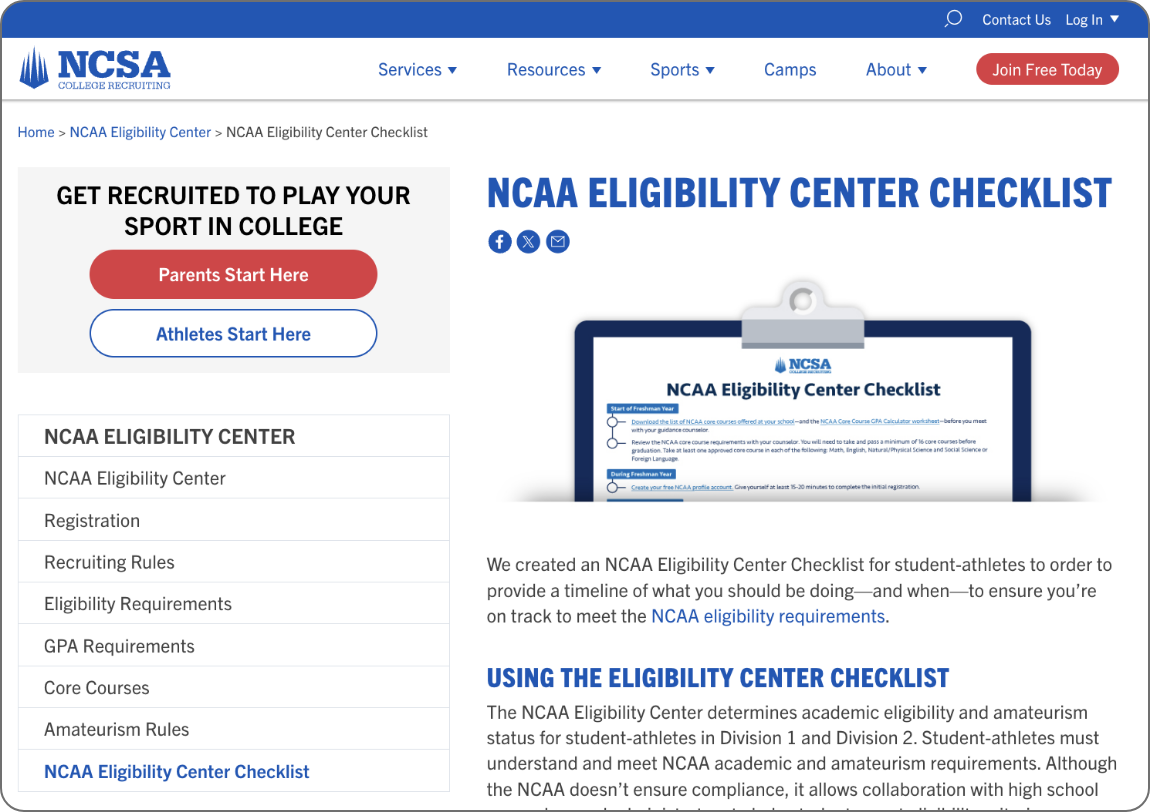Playing Sports in College
Choosing whether to play sports in college is a significant decision that can influence not only your college experience but also your overall academic and career trajectory. Understanding the different levels of college sports — intramural, club, and NCAA teams—can help you make an informed choice. Here’s a breakdown of these three options and some advice on balancing academics and athletics.

Intramural Sports
Intramural sports programs are the least competitive athletic option at most colleges and universities. These programs allow students to participate in student-led recreational sports leagues and tournaments within their school. Open to all students, regardless of skill level, intramural sports offer opportunities for fun, social interaction, and physical activity. Intramural sports include flag football, basketball, volleyball, soccer, softball, dodgeball, and more.
Participants can join teams with friends, classmates or colleagues and compete in a relaxed and friendly environment. The focus is on enjoyment rather than competition, making intramural sports an excellent way to stay active, meet new people, and relieve stress. They provide a great balance for those who want to stay active without the intense time commitment of more competitive sports programs.
For examples showcasing the variety of sports and activities:



Club Sports
Club sports teams are student-run organizations that allow students to continue playing their favorite sports in college, competing against other colleges and universities at a less intense level than NCAA athletics. These teams provide an excellent opportunity for athletes who want to remain active in their sport while enjoying a more relaxed and flexible environment.
Club sports vary widely in organization, competitiveness and participation requirements. Some clubs are highly competitive and require tryouts, while others are more inclusive and open to anyone interested. The level of commitment typically falls between intramural sports and NCAA teams, with regular practices and travel for games or tournaments. Common club sports include soccer, ultimate frisbee, rugby, lacrosse, and more.
Club sports allow students to represent their school in regional and sometimes national competitions, providing a sense of school pride and camaraderie. These teams also offer leadership opportunities, as they are often student-managed, with members taking on roles such as team captain, treasurer, or event coordinator. For more detailed information about club sports at colleges and universities, explore resources like this guide, which provides an overview of available options.

NCAA Athletics (Division I-III)
NCAA athletics represents the most competitive level of college sports, with teams funded by their respective colleges and overseen by the National Collegiate Athletic Association (NCAA). The NCAA categorizes colleges into three divisions—Division I (DI), Division II (DII), and Division III (DIII). Each has distinct characteristics and levels of competition.

Division I colleges offer the highest level of competition and are often the most well-known for their sports programs. These colleges may provide athletic scholarships. Student-athletes in DI programs often have rigorous training schedules, extensive travel for competitions, and exposure to national media coverage.
Scholarships and recruitment: The scholarship and recruitment process can be highly competitive and varies significantly depending on the sport. Researching specific schools and understanding their recruitment processes and eligibility requirements is crucial.

Division II colleges also offer competitive athletics and may provide athletic scholarships, though they generally have fewer resources than Division I schools. DII institutions emphasize a balance between academics and athletics, allowing student-athletes to excel both on the field and in the classroom.
Scholarships and academic focus: While DII schools offer athletic scholarships, they often prioritize a more balanced college experience, where student-athletes are encouraged to focus on both their academic and athletic pursuits.

Division III colleges prioritize academics and do not offer athletic scholarships. However, they still provide academic scholarships alongside a competitive sports program, allowing student-athletes to pursue their passion for sports while focusing on their academic goals. DIII colleges emphasize a well-rounded collegiate experience, focusing on balancing athletic commitments with academic coursework.
Athletic and academic balance: DIII schools offer a less intense athletic experience than DI and DII, making them ideal for student-athletes who want to maintain a strong academic focus while still engaging in sports.
Choosing between NCAA Division I, II, or III depends on your athletic ability, academic goals and desired college experience. Each division offers unique opportunities, so it’s important to thoroughly research and consider what aligns best with your personal and athletic aspirations.
NCAA resources for students and families 
College Divisions and Recruitment >
Differences Between D1, D2, and D3 >
9 Essential Steps to Getting Recruited >
How to Get Recruited as a College Athlete >
Get In The Game >
NACAC’s Tips For Student-Athletes And Their Families
Preparing for NCAA athletics in high school 
If you aim to play NCAA athletics in college, it’s crucial to start preparing early in high school. Here is a checklist to help you stay on track and meet the necessary requirements to be eligible for NCAA competition. Preparing early and staying organized is key to successfully navigating the path to NCAA athletics. By following this checklist, you can ensure you’re meeting all the necessary requirements and increasing your chances of competing at the collegiate level.


Balancing academics and athletics
Balancing academics and athletics is crucial for student-athletes to thrive in college. While pursuing your athletic passions, it’s important to prioritize your academic responsibilities to ensure success on and off the field. Here’s how you can effectively balance these competing demands.
 Time management
Time management
Plan your schedule
Create a detailed weekly schedule that includes class times, study sessions, practice, games, and personal time. Stick to this schedule as closely as possible.
Prioritize tasks
Identify your most important academic and athletic tasks each week and focus on completing them first.
Avoid procrastination
Start assignments and study for exams early to avoid last-minute stress.
 Utilize academic support resources
Utilize academic support resources
Tutoring services
Many colleges offer tutoring services specifically for student-athletes. Take advantage of these to stay on top of your coursework.
Study groups
Join or form study groups with classmates or teammates. This can help you stay engaged with your studies while sharing the academic load.
Academic advisors
Work closely with your academic advisor to ensure that your course load is manageable alongside your athletic commitments.
 Communicate with coaches and professors
Communicate with coaches and professors
Inform your professors
Let your professors know about your athletic commitments, especially if you’ll need to miss classes for games or travel.
Seek flexibility
Many professors are willing to accommodate deadlines if you communicate in advance and demonstrate your commitment to both academics and athletics.
Coaches’ support
Communicate openly with your coaches about your academic workload, and don’t hesitate to ask for support if you’re feeling overwhelmed.
 Focus on long-term goals
Focus on long-term goals
Career planning
Remember that your academic success is crucial for your future career, whether or not it involves athletics. Balance your responsibilities by keeping your long-term goals in mind.
Develop skills for the future
The discipline, time management, and teamwork skills you develop as a student-athlete will benefit your career and personal life.

Balancing academics and athletics enhances your college experience and sets you up for success in your future endeavors. Whether you aspire to compete at the highest level of NCAA athletics or enjoy recreational sports with friends, college offers a variety of opportunities to continue your athletic journey.
Additional resources 
How Do College Sports Affect Education? >
Achieving Harmony: Juggling Academics and Athletics >
Explore your options, stay informed about eligibility requirements, and find the right balance between academics and athletics to make the most of your college experience.
